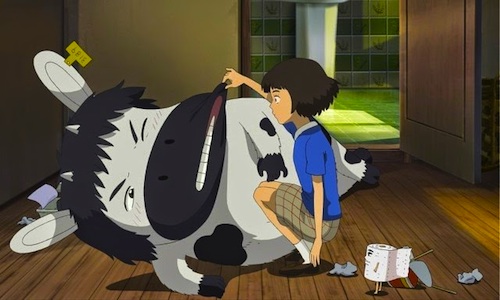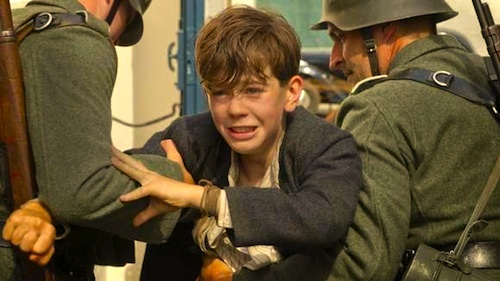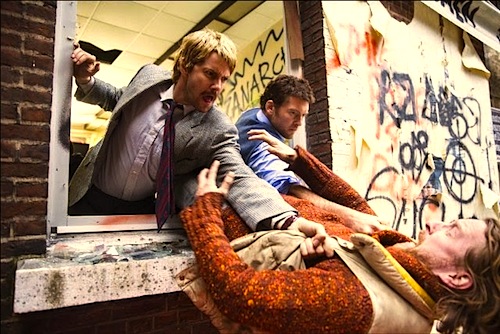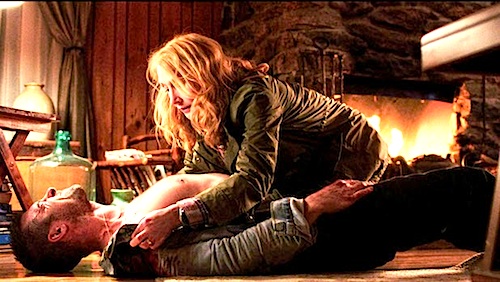By Joe Bendel. Generally, in the western tradition, rising from the dead is usually either something miraculous or horrifying. The jury is still out whether an isolated Pacific Northwestern community’s sporadic resurrections are a blessing or a curse. For two formerly grieving parents, it is certainly the former case when their youngest daughter literally walks back into their lives. However, she is not the only formerly deceased to reappear in The Returned, an Americanized remake of the French television show of the same name, which premieres on A&E this Monday.
Four years ago, Camille Winship perished with most of her classmates in a school bus accident that devastated the town. As the show opens, she comes to near the fateful scene and rather confusedly makes her way home, unaware of her temporary death and the subsequent passage of years. Her all-but-separated parents, Jack and Claire, had tremendous difficulty dealing with her loss, particularly her father. Understandably, they are not quite sure what it means for their relationship when she comes back, but they are instinctively protective and secretive. It is almost too much for her older sister Lena to take, considering she always suspected Camille was their favorite.
Quite faithful to the original source material in the early episodes, co-writer-showrunners Carlton Cuse and Raelle Tucker give us plenty of backstory for the Winships, but slowly dole out tidbits of history on the other once dead characters for dramatic effect. Unfortunately, probably the storyline getting the second most screen time after Camille Winship’s family involves the formerly dearly departed bar band bad boy Simon Moran and Rowan Blackshaw, the fiancée he stranded at the altar in the worst way possible. However, the most intriguing story arc follows Victor, a mysterious little boy given shelter by Dr. Julie Han. After four episodes, viewers will truly have no idea what to expect from him, unless they have seen the French show. However, it is safe to say one returnee is a seriously bad cat, but his secrets remain closely guarded.
Cruse and Tucker might be faithful to a fault adapting The Returned, but there are plenty of similar thematic precedents out there already, including the Canadian film also titled The Returned and the BBC America show In the Flesh, both of which chronicle the challenges of the formerly deceased in treatment for their zombie condition. However, A&E’s The Returned still mostly works, if you come to it without any baggage from its source material, because of the strength of its cast.

Mark Pellegrino is convincingly guilt-ridden and surly as Jack Winship and Tandi Wright is similarly engaging as the more stable but equally pained Claire. It is quite compelling to watch them process an unimaginable turn of events. Likewise, India Ennenga and Sophia Lowe truly look like sisters and share believably catty sisterly chemistry as Camille and Lena, respectively. As usual, Sandrine Holt’s sophisticated presence just generally elevates the proceedings and she sensitively expresses Han’s frustrated maternal instincts in her scenes with the squirrely Victor. Strangely though, Agnes Bruckner, who has a bit of a cult reputation for films like The Pact gets little work of substance in the first four episodes as busybody copper Nikki Banks. If only the same could be said of the quickly tiresome Blackshaw and Moran, played with excruciating angst by Mary Elizabeth Winstead (so much better in Faults) and Mat Vairo.
Over the course of the initial four episodes, A&E’s The Returned remains light on allegorical pretension and heavy on its extreme form of family drama, which is all for the best. In fact, the local pastor played by Carl Lumbly is unusual sympathetic and down-to-earth. When unknowingly challenged by a rather embittered returnee, his words on faith sound heartfelt rather than rote. He is one of many in the ensemble who inspire optimism The Returned will continue to be quite watchable. Highly moody but weirdly grabby, The Returned is worth checking out for fresh viewers in search of new genre television when premieres this Monday (3/9) on A&E.
LFM GRADE: B
Posted on March 9th, 2015 at 11:05pm.




